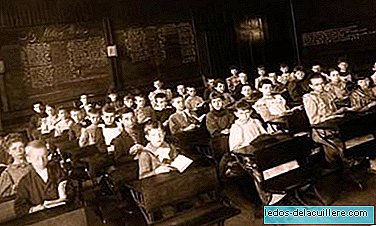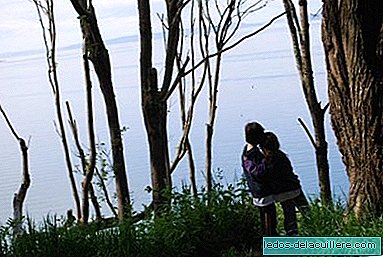
In this month marked by the return to school, schedules, books, folders, backpacks and school canteens, it is not bad to remember how the school was in the times of our grandparents, even that of our great-great grandparents back in the early nineteenth century .
It is interesting to see how even though we have evolved greatly in many aspects, there are others that are still the same today, but let's check what are the Ten differences between our children's school and that of our grandparents.
Community classrooms
In the nineteenth and early twentieth centuries, although I would say it extended a little more, it was quite common in the villages that the classrooms were unique and in them there were children from four years to those who were about to stop going because they were needed in the field. The teacher taught everyone at the same time, yes, each in his grade. The little ones sat in front and the older ones behind.
There was no school transport
In those years there were no school buses, nor any exclusive means to take the students, who were forced to walk the distance between their homes and the school on foot, distances that could sometimes be greater than 10 kilometers, that one way , on the way back there were another 10 and for us to get an idea, the 20 kilometers that these students traveled in their day are the ones that are traveled when doing a half marathon.
The lack of school transport is something that in many cases has been solved, but in many underdeveloped or developing countries, even in some areas of the already developed it is still common for students or their parents to have the necessary means to Get to school.
The boys did not get together with the girls
Actually this is not a difference, because today there are still centers where students are separated by sexes and even centers where one of them is not admitted. No comment.
The school year was shorter than now
By 1870, the school year lasted 132 days (today it is about 180 days), the normal schedule was from nine in the morning to two in the afternoon with a break of one hour to eat and stretch the legs. This had a logical reason to be so since many families needed all the help they could to harvest the crop and many children left school to help their parents in the field. Does it sound like something to you?
Scarce and homemade school supplies

Forget that image of the students writing on paper with pen and inkwell, pencil or pen. In those times they were materials that were within reach of very few pockets. A slab of slate and a chalk was the common material for the school in those days.
The student-teacher
On some occasions older students or those more advanced were in charge of teaching the smallest or the most "clumsy". Something like the older brothers of the school.
The memorization of the lessons
At that time the teachers taught different subjects, the most common is that it was a single teacher who taught both mathematics and language, geography, history, Latin, etc. The students had to learn the memory lesson and then recite it in front of the teacher who could correct on the fly some defect in pronunciation or some forgotten river.
If any of you have had a grandfather teacher, you may know perfectly well what we are talking about.
The teacher lived with the student's family
It was not a common practice, but it was practiced in some cases: the teacher lived with the student's family and generally taught him during a week after which he moved to the home of another of his students. Something like a traveling governess.
Strict discipline and corporal punishment
If there is something that has changed since those days are the punishments infringed by the teachers to the students. In those days it was enough to be late for class, to get out of line or not knowing the lesson to receive a couple of lashes.
The food was brought from home
In those times, except in boarding schools and for obvious reasons, there was no what we now call school canteens. Each student brought their food in a metal lunch box. Since running water was a scarce commodity in the field, students drank water from a bucket that was filled by older students and with a single cup for the whole class. Recall that having 10 kilometers to your home, going out to eat and returning after a nap was not very viable.












